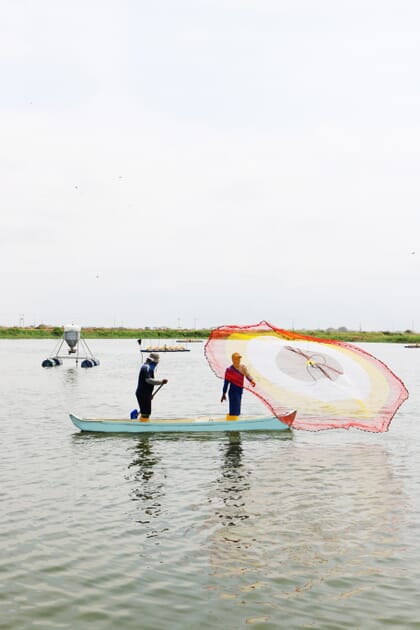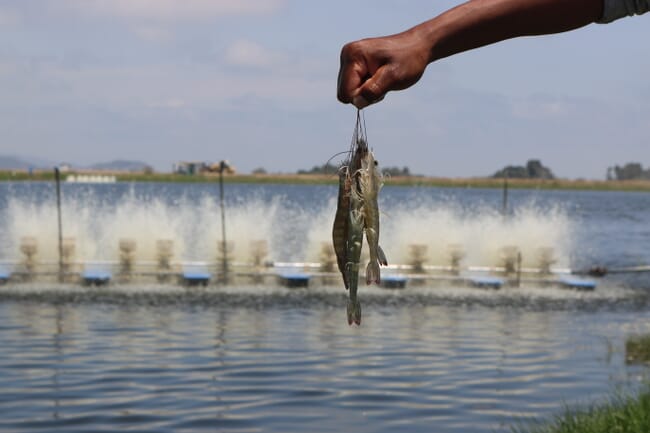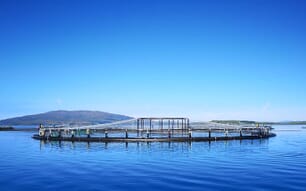
© CNA
What are the most recent annual production figures for Ecuador's aquaculture sector?
The Ecuadorian shrimp industry has become one of the fundamental pillars of the national economy, representing about 4 percent of the country’s gross domestic product, and generating around 261,000 direct and indirect jobs.
In 2020, 688,000 tonnes were exported, worth $3.8 billion, making shrimp the main product among non-oil exports, with a 25.5 percent share of the country's total exports.
Where would you like these figures to be in 10 years' time?
It’s complicated to forecast a number in an industry as dynamic as this, but we are working hard to continue being in the top three shrimp producers in the world and, of course, continue to be recognised for being an innovative industry, deeply committed to sustainability and the wellbeing of the Ecuadorian families working in the shrimp value chain.
How do you plan to achieve this growth?
We do have a vision of continuing to be a top player in the industry and continuing our path of sustainable growth, but I would say that more than planning, we should reinforce our capacity to adapt to ever-changing conditions. The capacity to adapt to those changes is what has permitted the industry to grow, despite all the challenges we are facing.

© CNA
How has the shrimp sector adapted during the Covid-19 pandemic?
In 2020, during the pandemic, the shrimp sector was prioritised by the government, which ensured that its operations remain active and gave continuity to our exports. Therefore, despite the great impact caused by the Covid-19 crisis, Ecuadorian shrimp exports achieved a growth of 7 percent in volume compared to 2019.
This was possible thanks to the fact that Ecuador implemented strict biosecurity protocols, based on the WHO and FAO guidelines, throughout the production chain, and we complied with the measures required by each of our export markets.
Additionally, measures were required such as the performance of diagnostic PCR tests for Covid-19 every 14 days for the personnel of the processing plants, as well as the reinforcement of the standardised sanitation operating procedures (SOPs) that guarantee the disinfection of areas and surfaces, to reduce the risk of contagion in products, packaging material and processing areas. This is also done inside the containers, prior to loading the product. As of today, thanks to an optimal and accelerated vaccination process in Ecuador, the country’s shrimp sector is 100 percent vaccinated.
How do you think 2021's shrimp production figures will compare to those in 2019 and 2020?
Between January and July 2021, Ecuador exported 462,000 tonnes of shrimp, worth $2.7 billion. Shrimp exports have grown by 15.3 percent in volume in relation to the same period of the previous year, and 25 percent from the 371,000 tonnes exported in the same period in 2019. It is projected that by the end of the current year the figures for both 2019 and 2020 will be exceeded.
What are the most important emerging trends in the shrimp sector?
In the last 10 years, shrimp exports have had an annual growth rate of 16 percent in volume. This growth is directly linked to increased production, the result of a low-density cultivation system, with open systems that reduce the risk of diseases, in addition to the implementation of technology, good practices and continuous improvements in the processes implemented. All these factors have given us the reputation as producers of the best shrimp in the world.
Do you see scope for Ecuador to diversify the species that it produces?
The aquaculture industry in Ecuador is currently focused on shrimp farming, as well as in the entire production chain that it entails – from larval laboratories to processing plants. Exporting companies are permanently implementing improvements in their processes and new technologies, which has made our country a world benchmark.
However, there are other species cultivated on a much smaller scale – such as tilapia, trout and cachama, among other native species. Likewise, the National Government promotes several initiatives focused on the promotion of production and the diversification of crops, and also has areas available under the modality of concession for the exercise of mariculture, an activity that has not yet been massively developed locally.

© CNA
What are your thoughts on the new partnership between The Fish Site and Aquacultura magazine?
It’s a great opportunity to better communicate what we do and the innovations that we are applying in the industry.
The purpose of the alliance is to exchange content through interviews with experts who will analyse topics of interest and share importance of the activity. We will focus on disseminating sustainable practices that generate greater value to this noble and growing activity.
Can you tell me a little bit about your own aquaculture career and your role with CNA?
I can proudly say that my aquaculture career began when I first came to the chamber. I´ve worked with the industry before organising its presence in trade shows for almost a decade as trade promotion official at the exports promotion agency of Ecuador, but never got closer than that. Ten years of being the face of Ecuador’s shrimp industry and addressing lots of local and international situations on behalf of the shrimp sector has been an amazing ride, full of challenges but also full of industry achievements.
If you could solve one challenge in the shrimp sector, what would it be?
Ecuador has proven that it is possible to raise the standards of shrimp production, especially on issues like traceability and antibiotic use. The Sustainable Shrimp Partnership is certifying farms that do not use any antibiotics during the production cycle – this is unique in the world. I would definitively pick antimicrobial resistance (AMR) due to abuse of antibiotics in food production as an issue to solve, because I´ve seen it is possible to address it and solve it. The world shrimp industry needs to be more committed to solve this as Ecuador did back in 2017 when SSP was created.




